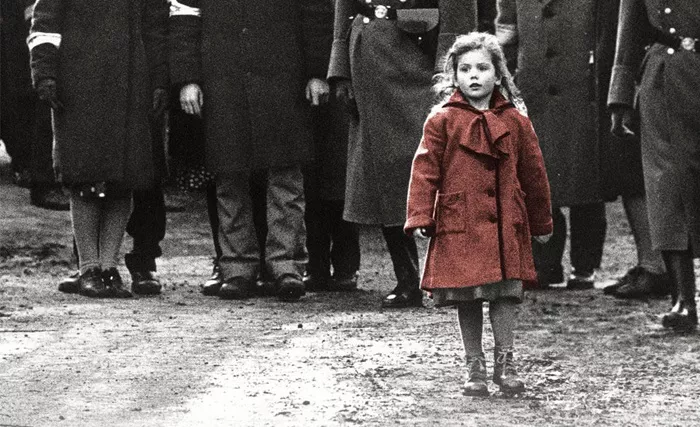In the vast realm of cinematic masterpieces, one film stands out as a beacon of profound storytelling, emotional depth, and historical significance — Steven Spielberg’s “Schindler’s List.” Released in 1993, this iconic film has left an indelible mark on audiences and critics alike. As we delve into the reasons behind its enduring greatness, we find ourselves on a journey through the artistry of filmmaking, the power of storytelling, and the importance of addressing historical atrocities.
Unparalleled Cinematic Craftsmanship
At the heart of “Schindler’s List” lies an unparalleled level of cinematic craftsmanship that elevates it to the pinnacle of excellence. Spielberg’s directorial prowess is evident in every frame, from the meticulously composed shots to the seamless integration of visual and auditory elements. The film’s cinematography, spearheaded by Janusz Kamiński, is a visual symphony that captures the stark reality of the Holocaust while maintaining an artistic sensibility. The deliberate use of black and white cinematography not only pays homage to the historical context but also adds a timeless quality to the film.
The technical brilliance extends to John Williams’ haunting score, which serves as a poignant accompaniment to the narrative. The masterful combination of music and visuals creates an emotional resonance that lingers long after the credits roll. In essence, the film’s technical elements work in harmony to immerse the audience in the harrowing reality of World War II and Oskar Schindler’s transformative journey.
A Riveting Narrative with Emotional Impact
Beyond its technical brilliance, “Schindler’s List” distinguishes itself through a riveting narrative that weaves together the personal and historical dimensions of the Holocaust. Thomas Keneally’s novel, upon which the film is based, provides a rich tapestry of characters and events, but it is Spielberg’s vision that brings it to life with unparalleled emotional impact.
The narrative unfolds with a meticulous blend of historical accuracy and artistic interpretation, portraying the horrors of the Holocaust without shying away from its brutality. The characters, especially Oskar Schindler portrayed by Liam Neeson, are not mere protagonists but vessels through which the audience experiences the complex spectrum of human emotions — from despair and horror to compassion and hope. The film’s ability to evoke empathy and provoke introspection is a testament to the narrative’s profound resonance.
Historical Authenticity and Ethical Responsibility
“Why is ‘Schindler’s List’ so good?” extends beyond its technical and narrative excellence to the film’s unwavering commitment to historical authenticity and ethical responsibility. Spielberg, known for his meticulous research and attention to detail, collaborated with Holocaust survivors and experts to ensure an accurate portrayal of the events.
The authenticity of the film is not confined to its depiction of historical events; it extends to the ethical responsibility of bearing witness to the atrocities committed during the Holocaust. “Schindler’s List” becomes a powerful tool for education and remembrance, urging audiences to confront the darkest chapters of history with an unflinching gaze. In doing so, the film becomes more than entertainment; it becomes a moral imperative to remember, learn, and prevent history from repeating itself.
See Also: Which 3 Movies Won 5 Oscars?
Oskar Schindler’s Complex Characterization
Central to the film’s brilliance is the complex characterization of Oskar Schindler, a German businessman who evolves from a profiteer exploiting Jewish labor to a savior risking everything to save lives. Liam Neeson’s nuanced portrayal adds depth to Schindler’s character, making him simultaneously flawed and heroic.
The character’s transformation is a compelling exploration of morality and conscience in the face of unspeakable evil. Schindler’s internal conflict, as he grapples with the enormity of the Holocaust and his own complicity, resonates with audiences on a profound level. It is through Schindler that the film delves into the moral complexities of human behavior, posing questions about culpability, redemption, and the capacity for change.
Symbolism and Subtext: A Cinematic Tapestry
In the realm of cinematic storytelling, the use of symbolism and subtext distinguishes great films from good ones. “Schindler’s List” is a cinematic tapestry woven with layers of symbolism that enrich the viewing experience. The iconic red coat worn by a little girl in the film serves as a potent symbol amid the black and white canvas, representing innocence amidst the overwhelming brutality.
The visual motifs, such as the recurring image of the girl in the red coat and the symbolic significance of the list itself, contribute to the film’s depth and complexity. Spielberg masterfully incorporates subtext, allowing audiences to engage with the narrative on multiple levels and discover new nuances upon subsequent viewings. This interplay of symbolism and subtext adds to the enduring appeal of “Schindler’s List.”
The Power of Remembrance and Education
As a work of historical fiction, “Schindler’s List” transcends the boundaries of entertainment and assumes the role of a powerful educational tool. The film’s impact on Holocaust education is immeasurable, prompting discussions in classrooms and serving as a catalyst for further exploration of this dark chapter in human history.
“Why is ‘Schindler’s List’ so good?” becomes synonymous with its ability to engage audiences intellectually and emotionally, fostering a deeper understanding of the Holocaust and its implications. The film stands as a testament to the power of cinema to educate, inspire empathy, and ignite a collective commitment to preventing the recurrence of such atrocities.
Legacy and Enduring Relevance
Over two decades since its release, “Schindler’s List” continues to be relevant and impactful. Its legacy extends beyond the realm of cinema, influencing subsequent generations of filmmakers, educators, and advocates for human rights. The film’s endurance in the cultural consciousness is a testament to its timeless themes, universal messages, and unwavering commitment to truth-telling.
In an era where the importance of storytelling is paramount, “Schindler’s List” remains a beacon of cinematic excellence that challenges, provokes, and inspires. Its enduring relevance lies in its ability to transcend the boundaries of time and space, reminding us of the indomitable human spirit in the face of adversity.
Conclusion: A Cinematic Triumph
In the pantheon of cinematic triumphs, “Schindler’s List” stands as a magnum opus that continues to resonate with audiences worldwide. Its excellence lies not only in the technical brilliance and emotional impact but also in its unwavering commitment to historical authenticity and ethical responsibility. The film’s enduring legacy is a testament to the power of storytelling to educate, inspire empathy, and provoke meaningful conversations about the darkest chapters of human history.
As we reflect on the question, “Why is ‘Schindler’s List’ so good?” the answer becomes a multifaceted exploration of filmmaking artistry, narrative depth, historical significance, and the enduring power of cinema to shape our collective understanding of the human experience. In the decades to come, “Schindler’s List” will undoubtedly continue to captivate, challenge, and leave an indelible mark on the hearts and minds of those who experience its profound narrative.
























